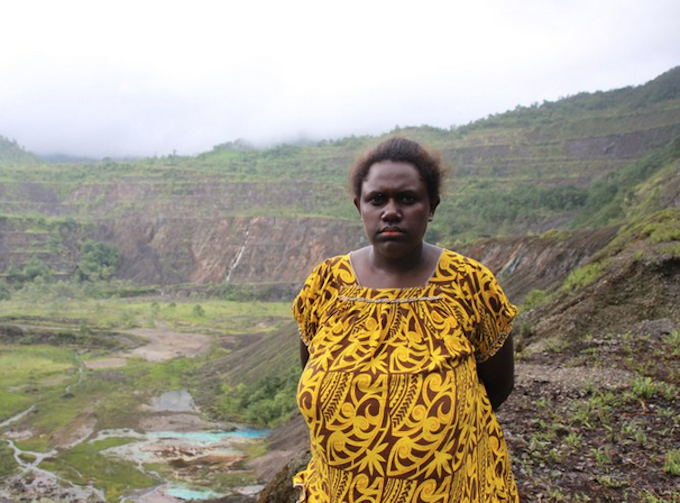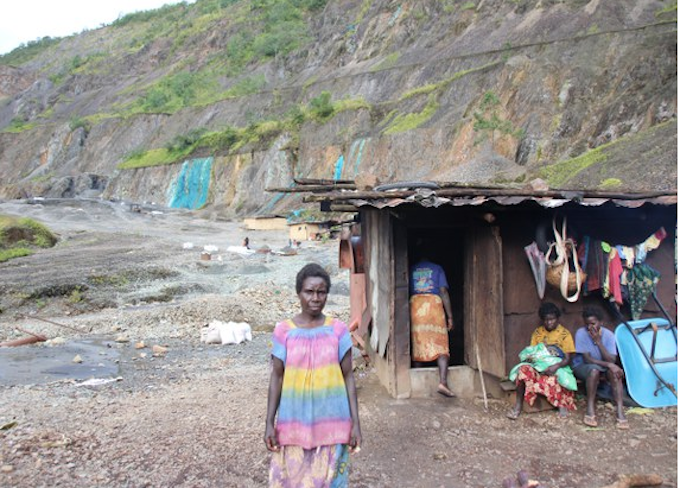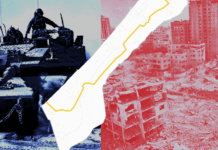
By Stefan Armbruster in Brisbane
The first large-scale environmental impact assessment of Rio Tinto’s abandoned Panguna mine in Papua New Guinea has found local communities face life-threatening risks from its legacy.
The independent study was initiated after frustrated landowners in PNG’s Autonomous Region of Bougainville took their longstanding grievances against Rio Tinto to the Australian government in 2020.
British-Australian Rio Tinto has accepted the findings of the report released on Friday but has not responded to calls by landowners and affected communities to fund the clean-up.
Rio Tinto abandoned one of the world’s largest gold and copper mines in 1989 when a long-running dispute with landowners over the inequitable distribution of the royalties turned into an armed conflict.
The Panguna Mine Legacy Impact Assessment report found the mine infrastructure, pit and levee banks pose “very high risks,” while landslides and exposure to mine and industrial chemicals present “medium to high” risks to local communities.

Flooding in downstream from Panguna — caused by a billion tons of mine tailings dumped into the Jaba-Kawerong river system — was reported as posing “very high” actual and potential human rights risks.
“The most serious concern is the potential impact to the right to life from unstable structures, and landform collapses and flooding hazards,” the report concluded, with the access to healthy environment, water, food and housing also impacted.
More than 25,000 people are estimated to live in the affected area, on the island of 300,000 in PNG’s east on the border with Solomon Islands.

“Rio Tinto must take responsibility for its legacy and fund the long-term solutions we need so that we can live on our land in safety again,” Theonila Roka Matbob, lead complainant and Bougainville parliamentarian, said in a statement.
“We never chose this mine, but we live with its consequences every day, trying to find ways to survive in the wasteland that has been left behind.”
“What the communities are demanding to know now is what the next step is. A commitment to remediation is where the data is pointing us to, and that’s what the people are waiting for.”

In August, Rio Tinto and its former subsidiary and mine operator Bougainville Copper Limited along with the Autonomous Bougainville Government signed an MoU to mitigate the risks of the ageing infrastructure in the former Panguna mine area.
Last month the three parties struck an agreement to form a “roundtable.”
Rio Tinto in a statement after the report’s release said the roundtable “plans to address the findings and develop a remedy mechanism consistent with the United Nations Guiding Principles on Business and Human Rights.”
“While we continue to review the report, we recognize the gravity of the impacts identified and accept the findings,” chief executive of Rio Tinto’s Australia operations Kellie Parker said.
Rio Tinto divested its majority stake in the mine to the PNG and ABG governments in 2016, and reportedly wrote to the ABG saying it bore no responsibility.
Bougainville President Ishmael Toroama in welcoming the report thanked Rio Tinto “for opening up to this process and giving it genuine attention and input.”
In a statement he said it was a “significant milestone” that would help with the “move away from the damage and turmoil of the past and strengthen our pathway towards a stronger future.”
Bougainville voted for independence from PNG in 2019, with 97.7 per cent favoring nationhood.
Exploitation of Panguna’s estimated U.S.$60b in ore reserves has been touted as a major future source of income to fund independence. The referendum result has yet to be ratified by PNG’s parliament.
The first report of the Panguna Mine Legacy Impact Assessment identified what needs to be addressed or mitigated and what warrants further investigation.
The second phase of the process will conduct more intensive studies, with a second report to make recommendations on how the “complex” impacts should be remedied.
A 10-year civil war left up to 15,000 dead and 70,000 displaced across Bougainville as PNG forces –supplied with Australian weapons and helicopters – battled the poorly armed Bougainville Revolutionary Army.
Panguna remained a “no-go zone” despite the Bougainville Peace Agreement in 2001, and access has still been restricted in the decades since by a road block of former BRA fighters.
A complaint filed by the Australian-based Human Rights Law Centre on behalf of affected communities with the Australian government initiated the non-binding, international mechanism to report on “responsible business conduct.”

They alleged that Rio Tinto was responsible for “significant breaches of the OECD guidelines relating to the serious, ongoing environmental and human rights violations arising from the operation of its former Panguna mine.”
“This landmark report validates what communities in Bougainville have been saying for decades – the Panguna mine has left them living with an ongoing environmental and human rights disaster,” HRLC legal director Keren Adams said in a statement.
“There are strong expectations in Bougainville that Rio Tinto will now take swift action to help address the impacts and dangers communities are living with.”
The two-year, on-site independent scientific investigation by Australian engineering services company Tetra Tech Coffey made 24 recommendations on impacts to address and what needs further investigation.
Comprehensive field studies included soil, water and food testing, hydrology and geo-morphology analysis, and hundreds of community surveys and interviews.
Outstanding demands from the community include that Rio Tinto publicly commit to addressing the impacts, provide a timetable, contribute to a fund for immediate and long-term remediation and rehabilitation and undertake a formal reconciliation as per Bougainville custom.
A class action lawsuit brought by 5000 Bougainvilleans against Rio Tinto and subsidiary Bougainville Copper Limited for billions in compensation earlier this year is unrelated to the impact assessment reports. Rio Tinto has said it will strongly defend its position.
Republished from BenarNews with permission.












































